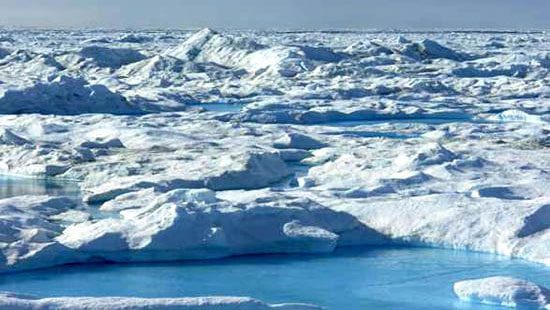The ocean, often referred to as the Earth’s lifeblood, covers about 71% of the planet’s surface. Its immense expanse not only influences global weather patterns but is also a reservoir of biodiversity and a critical component in the broader climate system. Understanding the climate in the ocean is crucial for appreciating the many interactions between marine environments and atmospheric conditions. This exploration delves into the intricate tapestry of oceanic climates, providing insights that illuminate its profound impact on our planet.
At the most fundamental level, the ocean’s climate is characterized by its temperature structure, salinity gradients, and currents. These factors work synergistically to create diverse ecosystems and influence weather phenomena both locally and globally. Due to the vastness of the ocean, the climate is not uniform; it varies dramatically from the surface to the depths and from one region to another. Surface waters tend to be warmer, influenced directly by solar radiation, while deeper waters often remain cold, governed by the thermohaline circulation—essentially a global conveyor belt that circulates water based on temperature and salinity differences.
One of the most remarkable features of the ocean’s climate is its capacity to store and transport heat. The ocean absorbs approximately 90% of the Earth’s excess heat generated by climate change, mitigating some immediate impacts of global warming. This heat transfer is facilitated by ocean currents such as the Gulf Stream and the Antarctic Circumpolar Current, which redistribute warm and cold water across vast distances. Consequently, regions that are seemingly distal from the equator can experience temperate climates due to the influence of these currents, underscoring the ocean’s role as a climate regulator.
The ocean’s influence extends beyond average temperatures; it shapes atmospheric conditions as well. Evaporation from the ocean’s surface contributes significantly to the humidity in the air, leading to cloud formation and precipitation patterns. This phenomenon is especially pronounced in tropical regions, where warm ocean waters provide the necessary heat and moisture to fuel cyclones, hurricanes, and monsoons. Such weather events can have devastating effects, yet they are a natural part of the planet’s climatic processes, facilitating the redistribution of heat and energy across the globe.
Salinity, another pivotal element, affects the ocean’s density and stratification. Variations in salinity occur due to factors such as freshwater input from rivers, melting ice, and evaporation. These differences can lead to the formation of distinct water masses, each with unique temperature and nutrient profiles. The interplay of salinity and temperature results in varying levels of ocean stratification, which in turn influences marine life and nutrient cycling. Understanding these dynamics is paramount for predicting how marine ecosystems will adapt in the face of climate change.
Marine ecosystems are intricately linked to the ocean’s climate. Coral reefs, for instance, are specially adapted to thrive in warm, shallow waters. However, these ecosystems are exceedingly sensitive to temperature fluctuations. As ocean temperatures rise, coral bleaching becomes more rampant; corals expel the symbiotic algae they rely on for energy, leading to diminished biodiversity and weakened reef structures. This phenomenon encapsulates a broader concern: as the ocean’s climate shifts, myriad species are put at risk, and the delicate balance of marine ecosystems hangs in the balance.
The ocean’s role is not only passive; it actively interacts with the atmosphere, creating phenomena like the El Niño-Southern Oscillation (ENSO). This periodic fluctuation in ocean temperatures can lead to significant changes in weather patterns worldwide, influencing everything from rainfall to temperature extremes. Understanding ENSO is essential for forecasting agricultural productivity, preparing for natural disasters, and managing freshwater resources, affirming the ocean’s integral role in global climate systems.
Furthermore, the absorbing of carbon dioxide by the oceans—known as oceanic carbon sequestration—plays a crucial role in mitigating climate change. Oceans absorb about one-third of CO2 emissions, influencing ocean chemistry and leading to phenomena such as ocean acidification. This alteration in seawater chemistry has profound effects on marine organisms, particularly those with calcium carbonate structures, like mollusks and certain plankton species, disrupting their lifecycle and posing threats to the food web.
In addition to these physical and chemical processes, the socio-economic implications of ocean climate change cannot be overlooked. Coastal communities that rely heavily on fishing, tourism, and recreational activities are experiencing shifts due to changing fish migration patterns and the degradation of marine habitats. This raises questions about food security and economic stability across vulnerable populations, highlighting the necessity for collaborative global efforts in climate change mitigation and adaptation strategies.
The deep-seated fascination with ocean climate stems not only from its complexity but also from its essential role in sustaining life on Earth. As stewards of the planet, humans must recognize the interconnectedness of the ocean’s climate and the broader ecological changes occurring due to anthropogenic influences. The commitment to understanding these dynamics is vital for developing effective conservation strategies that protect both marine life and coastal communities.
In conclusion, the climate in the ocean is a multifaceted and dynamic system that warrants close examination. Its profound influence on global weather patterns, marine ecosystems, and human livelihoods underscores the urgency of addressing the challenges posed by climate change. By fostering a deeper understanding of oceanic climates, society can cultivate a greater sense of responsibility towards the stewardship of our planet’s oceans, ensuring their health and sustainability for generations to come.








